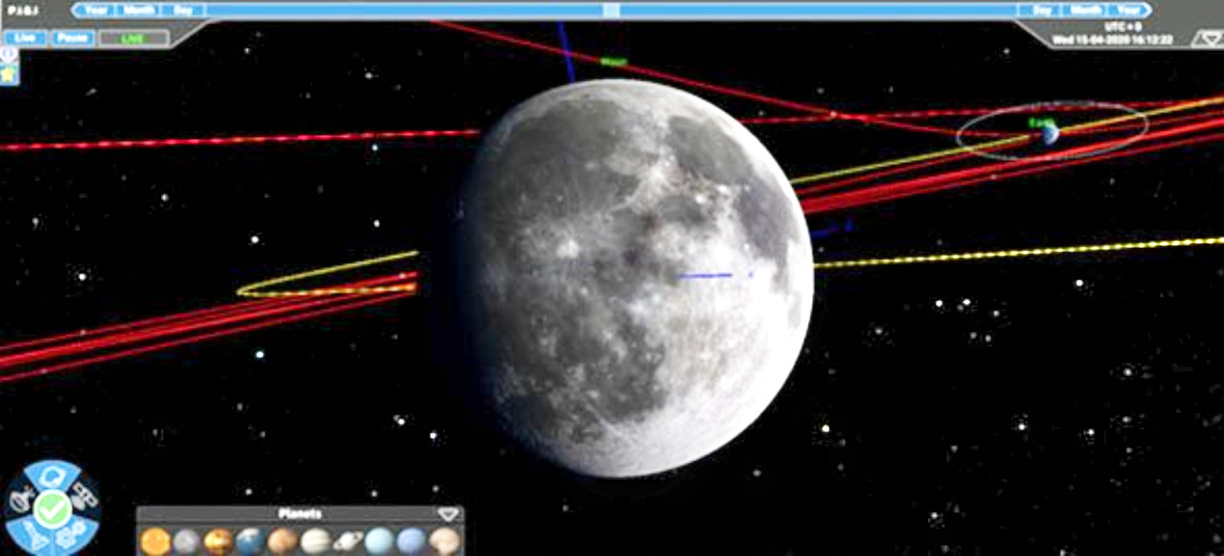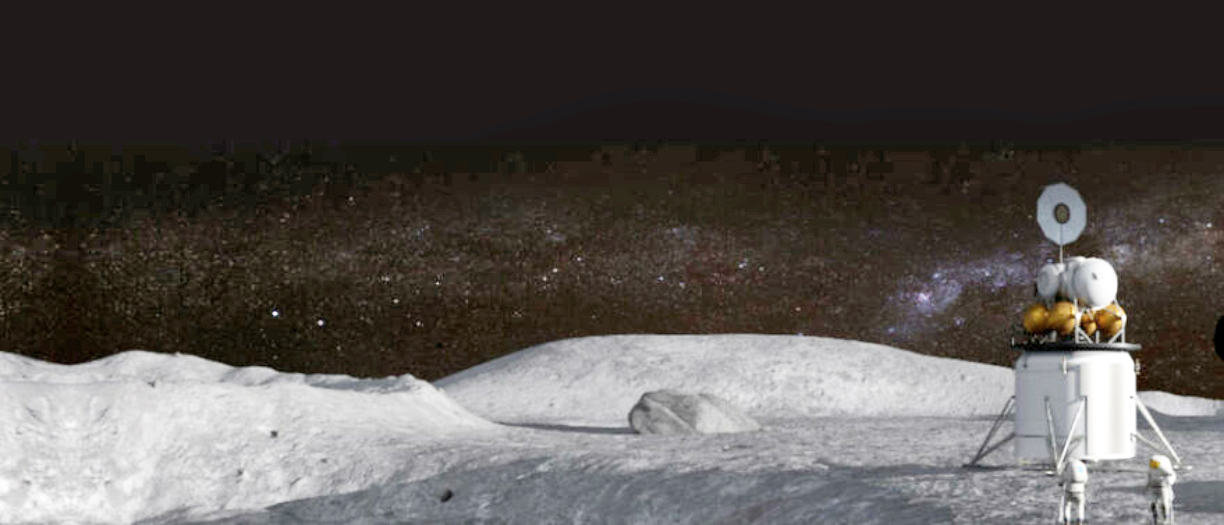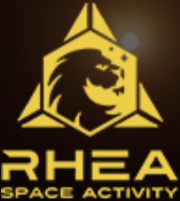Awareness of activity on the Lunar surface, and in the area of space between the Earth and the Moon, is critically important to maintaining U.S. space pre-eminence.
China and Russia signed an agreement in March of this year to cooperate on their planned co-construction of an international lunar research station and possibly on the deployment of a companion space station in lunar orbit. This was followed up in June by a five-year extension of the 2001 Sino-Russian Treaty of Friendship, which was due to expire next February. That Treaty of Friendship enshrines the two powers’ support for each other’s defense of national unity and their own territorial integrity.

Of the treaty renewal, Russian President Vladimir Putin commented, “Such agreements are of serious importance. In the context of increasing geopolitical turbulence…Russian-Chinese coordination plays a stabilizing role in world affairs.” (Reuters, June 28, 2021).
As aspirational and challenging as both nations’ aims may seem at first glance, these developments, as well as China’s rapidly expanding military and civilian space activities, highlight several important and immediate strategic issues facing the United States and its allies.

First and foremost, the U.S. Government is just beginning to ask itself: ‘Does the United States need the ability to monitor Chinese and Russian activity on and around the Moon, as it does their activities in orbit around the Earth?’
In our view, the answer must be a resounding “yes.”
Space is a domain rich with economic promise, as evidenced by a prolific and growing commercial presence out to geostationary orbit (GEO). Economic opportunities are arising in the area between the Earth and the Moon, the area referred to as “cislunar” space, as well as on the Moon itself. The United States and its allies and partners cannot responsibly operate in cislunar space without knowledge of the actions of other countries and organizations in that very same domain. Ignorance of Chinese and Russian activities in these regions would be contrary to our commercial and national security interests.
Transparency on the part of China and Russia, the chief economic and strategic rivals of the U.S., has not exactly been a primary aim for either nation through many decades of fraught international relations. While the United States should discuss cooperative arrangements with all spacefaring nations, it would be unwise to think that China and Russia will be as forthcoming with information as we would like, or need.
Leave aside, for just a moment, the ready need for confirmable, accurate information about the activity of rivals in a strategically important operating environment. There will also be a vital need for a wide variety of shareable information, such as comprehensive “space weather” data, updated lunar geophysical (or “lunaphysical”) conditions, and other cislunar and lunar situational analytics key to the success of U.S. and allied activities and, indeed, even personnel safety and survival. Leaders, as a demonstration of their pre- eminence, readily share such information.
The United States, while itself sharing useful information, is, without question, being technologically challenged by China.
NASA recently awarded the commercial rocket provider SpaceX a nearly $3 billion contract for the development of a Moon lander, in step with U.S. plans to return to the Moon under the Artemis program — an ambitious effort, with the goal of “boots on the Moon” by 2024, set by the previous administration. It remains to be seen if that schedule will hold, however. The current U.S. administration, which is on record as supporting the Artemis program, has not yet made a decision on the mission’s timeline, though it seems unlikely that the 2024 target date will be sustained.
The 2024 target date could be pushed back, for example, because Blue Origin and Dynetics, which lost the Human Landing System contract award to SpaceX, protested the award, further contributing to prospects for a project slowdown. Should the GAO rule in favor of the Blue Origin/Dynetics protest, we might all expect extended delays to the fruition of the Artemis program. Meanwhile, China moves forward apace, unhindered by commercial and bureaucratic challenges such as ours.

China’s military space activities are cause for increasing U.S. and allied concern — so much so, in fact, that NATO Secretary-General Jens Stoltenberg warned that an attack on a NATO-member-deployed space satellite could trigger Article V NATO-wide assistance rendered to that NATO nation, with China clearly in mind.
It is important to remember that China’s military and civilian space activities are much more closely linked than the well-known distinction between NASA and the Department of Defense (DoD) agencies. The technological prowess China recently demonstrated in landing and operating a rover on the Martian surface serves as a timely warning that we need to monitor its space activities closely.
Space Situational Awareness (SSA) — or, simply, knowing what is going on in space — has long been recognized as an important mission in the near-Earth environment (low-, medium-, and geosynchronous orbits). Similarly, space domain awareness is of emerging interest for monitoring spacecraft transiting between Earth, the Moon, and Earth-Moon “Lagrange points,” which are rare and valuable locations in space in which objects remain stationary.
The cislunar environment is much more gravitationally complex than areas closer to the Earth and is certainly not as well understood. Mechanisms to understand the behaviors of spacecraft in the cislunar domain exist, and all activity, regardless of origin, in the cislunar environment should be tracked and monitored to provide actionable, real-time information. This capability could be outsourced to the commercial market with solutions including inexpensive, small satellites potentially capable of monitoring spacecraft transit between the Earth and the Moon, as well as activity around the Moon and on the lunar surface.
A blossoming domestic commercial market for New Space technologies is already capable of designing, developing, and producing these mini-satellites (measured in the tens, as opposed to thousands, of kilograms in size), and several next-generation commercial companies have taken on the role of providing such services to U.S. government customers. For example, the National Reconnaissance Office (NRO) has already leveraged commercial companies, including through the award of a commercial imagery contract to the Earth Observation (EO) company Plant Labs Federal, which has 150 on- orbit satellites that are all only about the size of a breadbox. Smaller satellites such as these are much less expensive to manufacture en masse, making their applications more economically appealing.
Therefore, if the technology exists and is available, what is missing from this equation? In our view, the United States should prioritize plans to identify needed sensing capabilities and then design a program to turn these priorities into an operational reality.
The United States has both the need and the capability to accomplish this important challenge. The time is now to build such a space infrastructure to meet the space information needs of the next several decades.
Such an infrastructure would not rule out cooperation with China and Russia when deemed appropriate. Healthy cooperation and competition among the major space powers can lead to benefits for the entire world as progress is made on the Moon. NASA, the national academies, and other research organizations should be tasked to develop research agendas that can benefit all spacefaring nations. However, consideration should still be given to the realities and complexities of the mechanics of international rivalry in the space domain.
At a time when the Senate decisively approved $250 billion for a major augmentation of federal science, technology, and research spending (in which space plays an important role), we should want to ensure that America does not simply return to the Moon but fully understands what is going on in and around the Moon as allies and adversaries alike begin to proliferate their own space assets.

In so doing, we will expand our knowledge of this new 21st century frontier, demonstrate U.S. leadership, and maintain U.S. pre-eminence in space in and around the Moon for decades to come.
Cameo Lance is the Director of Physics Programs for the Washington, D.C.-based New Space company Rhea Space Activity (www.rheaspaceactivity.com).
Bruce MacDonald, a former Assistant Director for National Security with the White House Science Advisor’s Office (1995 – 1999) has been a Senior Advisor to Rhea Space Activity, and is an adjunct professor at Johns Hopkins University (www.jhu.edu).
Rhea Space Activity (RSA) is an astrophysics start-up company that ideates and creates high-risk / high-reward research and development concepts to support U.S. national security objectives. RSA has developed technologies in fields as diverse as infrared satellites, directed energy, artificial intelligence, Light Detection and Ranging (LIDAR), astro-particle physics, small satellites, cislunar operations, intelligence collection, autonomous underwater vehicles, and for the F35 Lightening II.

